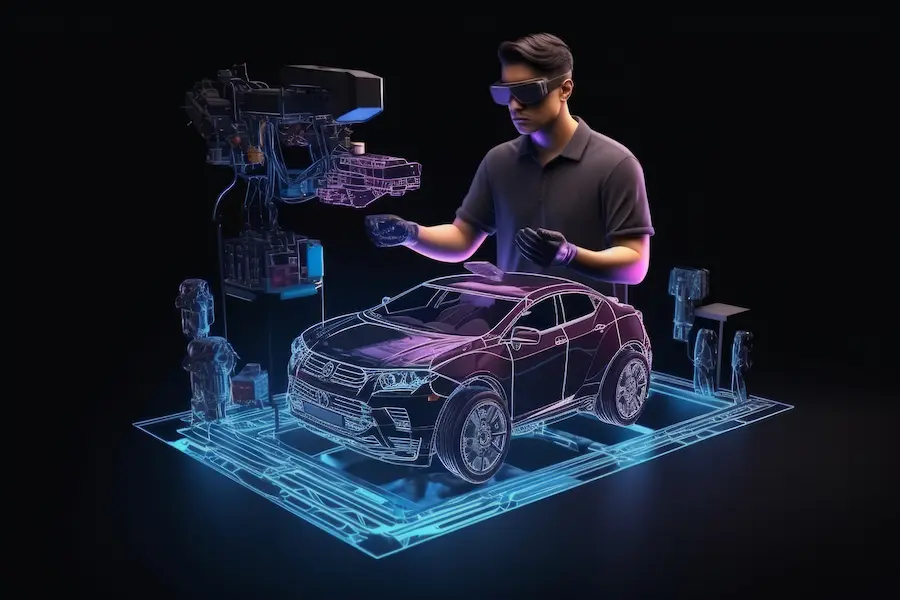Are you tired of juggling your phone while driving? Android Auto is exactly what you need. I know how frustrating it can be to handle your phone while navigating, taking calls, or listening to music when you’re on the road. I’ve spent countless hours behind the wheel, and Android Auto has completely changed how I drive. It connects your smartphone to your car’s display, making it easy to access key features without distractions. With Android Auto, you can get directions, play music, send messages, and take calls all while keeping your hands on the wheel and your eyes on the road.
For me, Android Auto made driving much more enjoyable. It’s safer and more convenient. No more fumbling with my phone to change a song or check directions. And I can focus on what matters most: driving. Android Auto integrates not only your phone’s apps but also makes your car smarter. With newer updates, it can even work with car-specific features like climate control and seat adjustments, depending on the vehicle.
Android has become a game-changer in the automotive world, and it’s only getting better. With more vehicles supporting the system, and constant updates from Google, Android Auto continues to improve. But trust me, there’s so much more to this system than just these basics. Let me show you how it works and why it’s such a game-changer for your daily driving.
How Does Android Work?
At its core, Android Auto works by displaying your phone’s screen on your car’s display. But it’s not just about showing apps it integrates your phone’s features into an interface that’s simple, easy to use, and distraction-free. When connected, you can interact with your phone’s apps through your car’s touchscreen, voice commands, or even the steering wheel controls.
Android Auto supports popular apps like Google Maps for navigation, Spotify for music, and WhatsApp for messaging. The system can automatically adapt to the car’s layout, providing seamless integration with navigation systems, and even managing features like the car’s temperature or vehicle diagnostics. I can ask Google Assistant for directions, play music, or even send and read messages all without having to touch my phone. It’s like having a personal assistant helping me out during every drive. Setting it up is straightforward, and once you’ve got it up and running, it’s incredibly easy to use.
Setting Up Android Auto in Your Car
Setting up Android Auto is easier than you think. Here’s everything you need to get started:
Compatible Car or Head Unit: Make sure your car supports Android. Most newer cars do, but if yours is a little older, you might need to upgrade your head unit. It’s an easy check in your car’s manual or by contacting the manufacturer.
Android Device: Your phone needs to run Android 6.0 (Marshmallow) or higher. This ensures that the system is compatible with the features required by Android Auto.
Android Auto App: If the app isn’t already pre-installed on your phone, you can download it directly from the Google Play Store.
USB Cable or Wireless Connection: Some cars use a USB cable to connect, while others support wireless Android. It’s a good idea to check your car’s manual for compatibility with wireless Android Auto.
Once everything is set up, connect your phone (via USB or wirelessly), and Android Auto will launch automatically on your car’s screen. From there, you’ll be able to access apps like Google Maps, music, and more all in a layout designed for safe and easy driving.
The Best Features of Android Auto
Android is packed with great features that I rely on daily. Here are the top features that have really enhanced my driving experience:
Google Maps Integration: I rely on Google Maps to get accurate, real-time traffic updates and directions. Android brings it directly to your car’s screen, making navigation effortless. With the integration of traffic data, alternate routes, and estimated arrival times, it’s truly a lifesaver.
Music and Podcasts: Whether I want to listen to my favorite Spotify playlist or catch up on podcasts, Android gives me complete control over my music and podcasts all hands-free. No more searching for the perfect song while driving. The ability to switch between music services or podcasts with just a voice command makes the experience even more convenient.
Hands-Free Calls and Texts: A feature I’ve come to appreciate is the ability to take calls and send text messages without ever picking up my phone. Google Assistant reads my messages aloud, and I can respond with a simple voice command. This keeps me focused on the road, ensuring I stay safe without missing any important calls or messages.
Voice Control with Google Assistant: Google Assistant’s integration with Android makes it easy to control apps without lifting a finger. I can ask it to play music, send messages, check the weather, or make a call everything is done with voice commands. It’s incredibly convenient and enhances both safety and efficiency on the road.
These features aren’t just cool; they’re practical and make driving a lot more convenient. And the best part is that Android is constantly improving, with updates that add more features and refine the system for an even smoother experience.
Android Auto and Customization
One of the features I appreciate most about Android Auto is its level of customization. It’s not a one-size-fits-all system. I can personalize the layout of my home screen, select which apps I want visible, and even choose my preferred navigation app whether it’s Google Maps or Waze. Android learns from my behavior, offering smarter suggestions based on my habits.
For example, Android always recommends my favorite playlist when I start my car. These small conveniences make a big difference in how enjoyable the experience is. Additionally, the system remembers past routes and automatically shows me the most frequent destinations, saving time when I need to get somewhere fast. As Android continues to evolve, I’m excited to see what other personalizations will be added in the future.
Troubleshooting Common Android Auto Issues
Although Android Auto works smoothly most of the time, I’ve occasionally faced some issues. Here’s how I solve them:
Android Auto Not Connecting: If it doesn’t connect, I restart both my phone and my car’s system. A quick check of the USB cable or wireless connection usually fixes the issue.
Lagging or Freezing: If the interface starts lagging or freezing, clearing the app’s cache or reinstalling it usually does the trick. Keeping my phone’s OS updated helps too, as updates often fix bugs and enhance performance.
App Compatibility Issues: Not every app works with Android Auto. If an app isn’t functioning properly, I check whether it’s compatible in the Android app list in the Google Play Store. This list is curated to ensure that only apps that follow Android Auto’s guidelines for safe use while driving are included.
Voice Recognition Issues: If Google Assistant isn’t responding, I make sure the microphone on my phone is working and that Android has the necessary permissions. Sometimes, a quick restart of the phone can resolve issues with voice commands.
These troubleshooting steps are quick and effective in getting me back on the road with minimal hassle.
Android Auto vs. Apple CarPlay: What’s the Difference?
If you’re an iPhone user, you might be comparing Android Auto with Apple CarPlay. Here’s how they stack up:
Compatibility: Android works with Android phones, while Apple CarPlay is for iPhones.
App Support: Android Auto supports a broader range of third-party apps, like Waze, Spotify, and Audible, while CarPlay is more focused on Apple’s native apps, such as Apple Music and Apple Maps.
Customization: Android offers more flexibility when it comes to customizing the app layout, allowing users to prioritize apps based on their driving habits.
For Android users, Android Auto is the better option due to its versatility and wider app support.
Android Auto for Fleet Management: A Business Perspective
Android Auto isn’t just for personal use it’s also a game-changer for businesses that rely on fleet management. Drivers can use Android Auto to access navigation, stay in touch with the office, and manage tasks hands-free. This increases productivity, reduces accidents, and improves communication.
From a business perspective, the ability to track routes, monitor fuel efficiency, and even monitor driver behavior in real-time offers significant advantages. Android Auto improves fleet safety, efficiency, and overall management, making it an essential tool for business owners.
Android Auto and Privacy: What You Should Know
When I first started using Android Auto, I had privacy concerns, like many others. However, I’ve found that Google takes privacy seriously. The system collects data, such as location and app usage, but it’s primarily used to improve your experience, like providing accurate directions or traffic updates. You can always manage the data shared by adjusting your Google account settings.
The Bluetooth connection used for hands-free calls is secure, and Android Auto operates primarily through USB or wireless connections, which do not use Bluetooth for data transfer. If privacy is a concern, you have control over the data that’s shared, ensuring that your experience remains secure.
The Future of Android Auto
The future of Android Auto looks very promising. With wireless connectivity becoming more common, I’m excited to see USB cables becoming obsolete. Additionally, Google Assistant’s voice recognition will continue to improve, allowing for more natural interactions.
Android Auto will also continue to learn from your driving habits, offering personalized music, routes, and app recommendations to make every trip even easier. With the integration of more AI-driven features, I’m eager to see how Android Auto evolves in the years to come.
Conclusion
In conclusion, Android Auto has truly transformed my driving experience, and I believe it can do the same for you. It brings together convenience, safety, and seamless connectivity, whether you’re commuting, running errands, or on a long road trip. With continuous updates and exciting new features on the horizon, Android Auto will only get better. If you haven’t tried Android Auto yet, I highly recommend giving it a go. It’s the smart, simple way to bring your phone’s best features into your car and trust me, once you try it, you won’t look back.
Read Also : Tech Waterfall Method: 5 Key Benefits, Challenges, and Why It’s Still Crucial for Complex Projects

